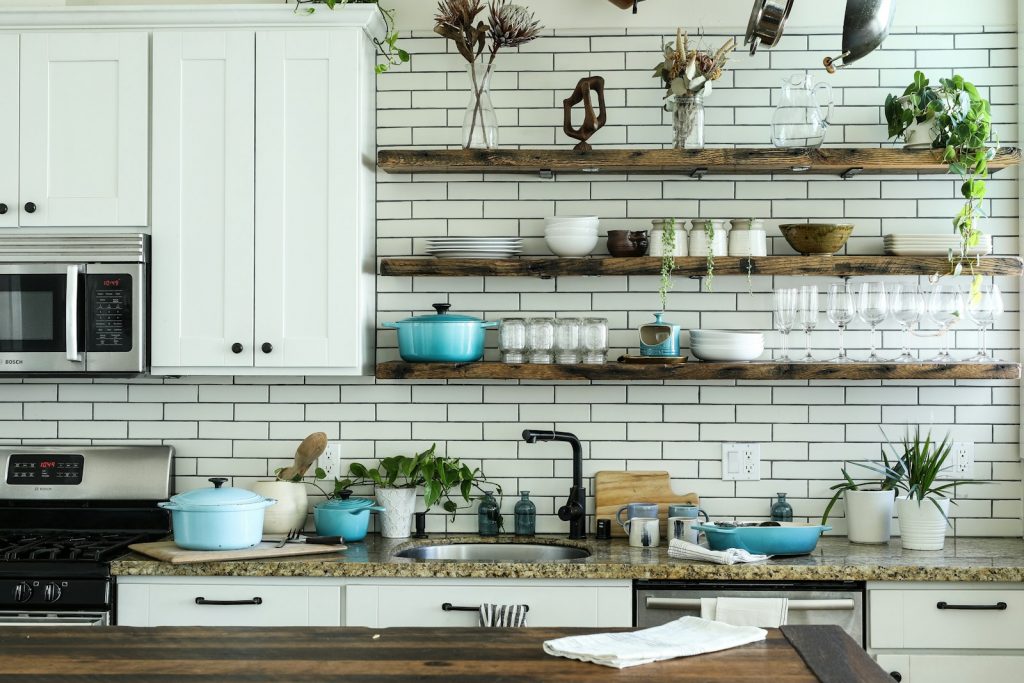Understanding Zero Waste Principles
Zero waste living is an approach geared towards minimizing waste through the principles of reducing, reusing, and recycling. These foundational concepts encourage individuals and communities to rethink their consumption patterns and strive for sustainability.
- Reduce: The first principle emphasizes minimizing waste generation in the first place. This can include choosing products with less packaging, opting for digital over physical copies, and prioritizing high-quality items that last longer. A sustainable lifestyle focuses on making conscious decisions to lessen output and prevent waste before it occurs.
- Reuse: This principle encourages the repurposing of items instead of discarding them. By finding new uses for materials, individuals can extend the life of products and decrease overall waste. Examples include using glass jars for storage, repurposing old clothes into cleaning rags, or engaging in DIY projects. Emphasizing reuse fosters creativity and resourcefulness.
- Recycle: While recycling is often seen as a go-to solution, it is essential as a final step after reducing and reusing. Recycling involves processing materials to create new products, thus reducing the need for raw materials and minimizing landfill contributions. This principle highlights the importance of correctly sorting recyclable materials to ensure they are processed effectively.
By adopting zero waste principles, you can significantly transform your lifestyle, leading to a more sustainable way of living. Explore the ultimate guide to zero waste dishwashing or discover simple steps toward a sustainable household for further insights on eco-friendly practices.
Assessing Your Waste Footprint
Conducting a waste audit in your home is a crucial step toward understanding and reducing your waste footprint. Here’s a practical guide to help you get started.
- Identify the Types of Waste: Begin by categorizing your waste into manageable groups. Common categories include food waste, recyclables, non-recyclable trash, and hazardous waste. This will help you see which types of waste you’re producing the most.
- Gather Your Data: For one week, collect all your household waste. Use separate bins or bags for each category identified above. At the end of the week, weigh each bag, noting the quantity for each waste type. Research shows that households can dramatically reduce their waste just by understanding what they throw away the most (Source: Morung Express).
- Analyze Your Waste: Once you have recorded the weight and volume of each category, compile your data to find patterns. For example, if you find that a large portion of your waste is food scraps, this highlights an area for potential reduction. Implementing strategies such as meal planning can further mitigate food waste, as noted in strategies for reducing kitchen waste.
- Set Reduction Goals: Based on your analysis, set specific goals for waste reduction. This might include reducing food waste by a certain percentage or aiming to recycle more consistently. Research indicates that setting distinct goals can substantially increase the likelihood of success in waste reduction efforts (Source: ABP News).
- Monitor Progress: After implementing your waste reduction strategies, conduct follow-up audits every few months. Continuous monitoring can help you stay on track and adjust your strategies as necessary.
By assessing your waste footprint, you not only identify areas for improvement but also contribute to a more sustainable lifestyle. For further ideas on enhancing your home’s eco-friendliness, check out our guide on designing an eco-friendly home.
Steps to Eliminate Single-Use Items
Transitioning away from single-use items can significantly reduce waste and environmental impact. Here are practical steps and creative solutions to replace common disposable products with sustainable alternatives:
- Switch to Reusable Containers: Replace single-use plastic wraps and bags with reusable containers. Not only are these better for the environment, but they can also save you $100–$200 annually, according to Consumer Reports. Store meals in glass or stainless steel containers that are durable and microwave-safe [Source: Money Talks News].
- Opt for Solid Personal Care Products: Liquid soaps, shampoos, and detergents often come in plastic-heavy packaging. Switching to solid alternatives, like shampoo bars and solid dish soap, reduces plastic use and is an economical choice [Source: Money Talks News].
- Invest in Reusable Grocery Bags and Produce Bags: Use cloth bags for shopping and mesh bags for produce. These alternatives are often stronger and last longer than their single-use counterparts, helping reduce plastic pollution significantly.
- Choose Bulk Products: Buying in bulk minimizes packaging waste and can be cost-effective. Look for stores that offer bulk options for grains, beans, and cleaning products.
- Replace Single-Use Tableware: For parties or daily use, consider bamboo or stainless steel utensils, plates, and straws. These can be reused multiple times, reducing reliance on disposable items.
- Utilize Cloth Napkins and Towels: Swap paper napkins and paper towels for cloth versions. They can be washed and reused, decreasing overall waste.
- Support Brands Committed to Sustainability: Look for products from companies like Radisson Hotel Group that are eliminating single-use items and adopting bulk dispensers [Source: Hospitality Net].
- Compost Food Scraps: Instead of using bagged organic waste for disposal, consider composting. This not only reduces landfill contributions but also enriches soil for gardening.
- Participate in Local Clean-Up Events: Engage with community efforts to reduce plastic pollution and support initiatives focused on sustainability, such as the push for a global plastics treaty [Source: Clean Technica].
By implementing these steps, you can contribute to a healthier planet while creating a sustainable household. For further insights on maintaining an eco-friendly lifestyle, check out our guides on designing an eco-friendly home and easy kitchen swaps.
Creating a Sustainable Kitchen
Minimizing food waste in your kitchen is essential for fostering a more sustainable lifestyle. Here are some effective strategies to achieve this:
- Strategic Grocery Shopping: Start by revising your grocery shopping habits. One effective method is to shop more frequently but buy less each time, which prevents the purchase of items that may go unused and spoil. Prioritize fresh ingredients that you can plan to use immediately, reducing the likelihood of waste from forgotten groceries [Source: New York Times].
- Proper Storage Techniques: Properly storing food can significantly extend its shelf life. Using airtight containers and keeping produce dry and in the right environment can help reduce spoilage. Additionally, consider utilizing your freezer for items like bread and cooked meals, as freezing can preserve their quality and prevent waste [Source: Simply Sustainable Home].
- Meal Planning: Effective meal planning is another vital tool in reducing food waste. By planning your meals for the week, you can create a precise shopping list, ensuring you only purchase what you need. Incorporate versatility in meals by preparing dishes that can use the same ingredients in different ways throughout the week [Source: Simply Sustainable Home].
- Composting: Composting kitchen scraps is an excellent method to repurpose waste and enrich your garden soil. Starting a small compost bin can be easy, even in limited spaces. Items such as vegetable peels, coffee grounds, and eggshells are prime candidates for composting, contributing to reducing landfill waste while providing nutrients for plants [Source: Simply Sustainable Home].
- Utilizing Leftovers: Finding ways to utilize leftovers creatively can enhance sustainability in your kitchen. Transforming yesterday’s meals into new dishes is not only economical but also reduces waste. For instance, leftover roasted vegetables can be added to soups or salads, while extra grains can be repurposed in stir-fries [Source: Business Insider].
Incorporating these practices into your kitchen routine can make a notable difference in reducing waste and promoting sustainability, ultimately leading to a healthier planet and kitchen.
Engaging the Family in Zero Waste Living
Involving your family in the journey towards zero waste living can be both an enriching experience and a means of fostering sustainability within the household. Here are some effective strategies to engage your family members:
- Set Shared Goals: Establishing clear and achievable goals is essential for any family embarking on a zero waste journey. Encourage family discussions to define what zero waste means to each member and agree on specific targets, such as reducing plastic usage or committing to recycling more effectively. Research shows that collaborative goal-setting increases commitment and accountability among participants [Source: BDC Network].
- Interactive and Collaborative Activities: Making zero waste practices a family affair can enhance learning and involvement. Organize fun activities like DIY natural cleaning products using recipes from reliable sources like our article on DIY natural kitchen cleaners, or create reusable food wraps by following our DIY project. These hands-on projects promote sustainability and also provide an opportunity for family bonding.
- Educative Booster Sessions: Regular family meetings to share insights and progress can keep motivation high. Discuss challenges faced and brainstorm solutions together, fostering a sense of teamwork. Consider exploring educational resources together, like articles about eco-friendly living or the importance of composting discussed in our guide to composting.
- Celebrate Milestones: Recognizing and celebrating achievements, no matter how small, can cultivate a positive reinforcement loop. Plan a special family activity or reward for achieving milestones, such as reducing waste by a certain percentage. This creates a sense of accomplishment and encourages ongoing commitment.
By combining clear goals, collaborative activities, educational sessions, and celebrating successes, you can create an engaging zero waste journey for your family that is both fun and impactful.
Sources
- Hospitality Net – Radisson Hotel Group Eliminates Single-Use Items
- Simply Sustainable Home – A Beginner’s Guide to Composting Kitchen Scraps (Even in Small Spaces)
- Simply Sustainable Home – DIY Natural Kitchen Cleaners: Effective Eco-Friendly Recipes
- Simply Sustainable Home – DIY Reusable Food Wraps: A Simple Eco Kitchen Project
- Simply Sustainable Home – How to Design an Eco-Friendly Home: A Comprehensive Guide
- Simply Sustainable Home – 15 Easy Eco-Friendly Kitchen Swaps to Reduce Waste Today
- Simply Sustainable Home – Smart Meal Planning: How to Stop Food Waste in Your Kitchen
- Business Insider – How Meal Prep Can Help You Save Money and Food
- Morung Express – CCPA Directs E-Commerce Firms to Self-Audit Within 3 Months
- ABP News – CCPA Directs Self-Audit of Dark Patterns in E-Commerce
- New York Times – Cost-Cutting Grocery Shopping Tips and Recipes
- Clean Technica – World Environment Day Calls on You to #BeatPlasticPollution
- BDC Network – How to Drive Sustainability in Material Selection
- Money Talks News – Double Detox: Microplastic-Fighting Habits That Pay Off Fast


